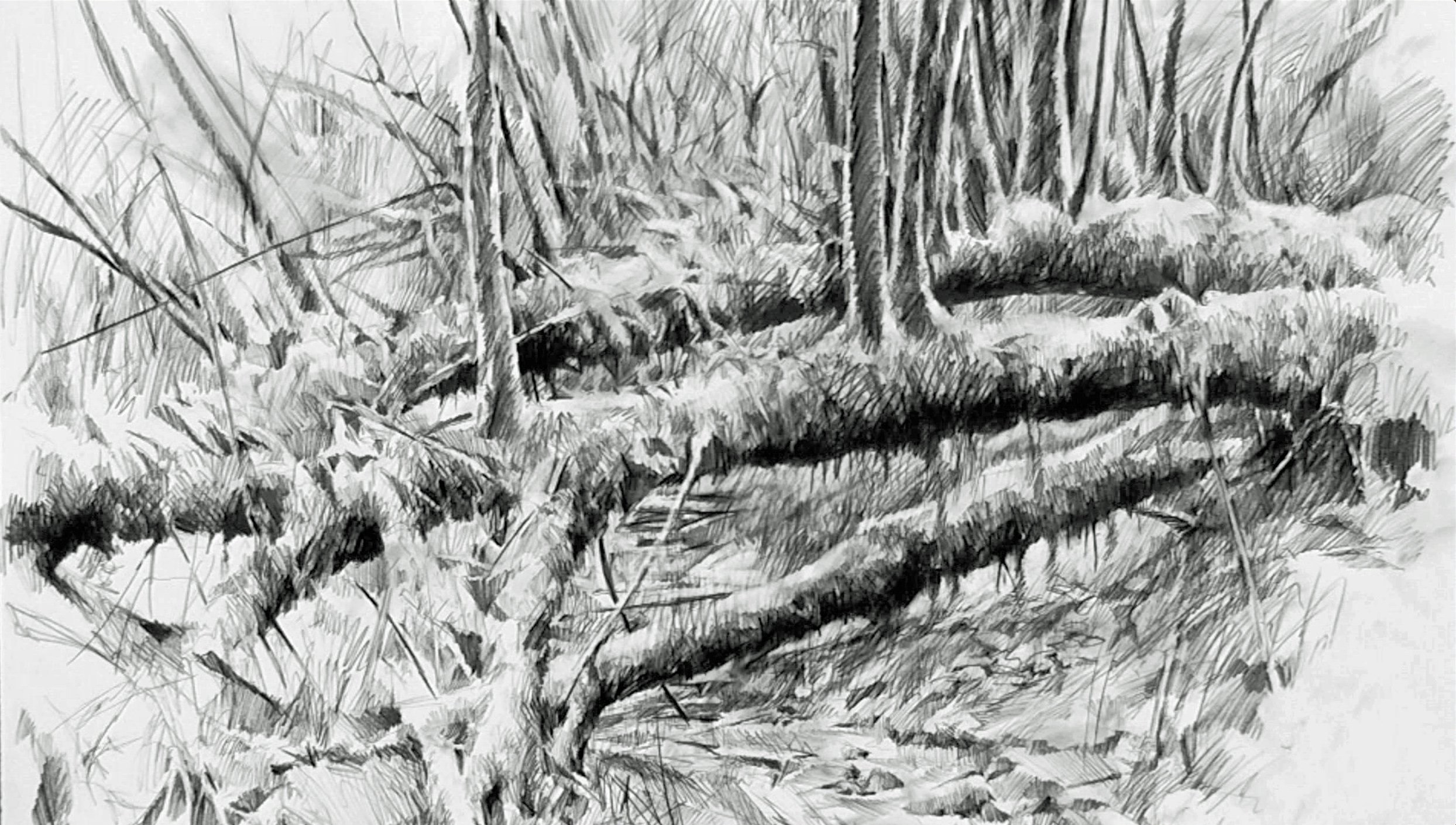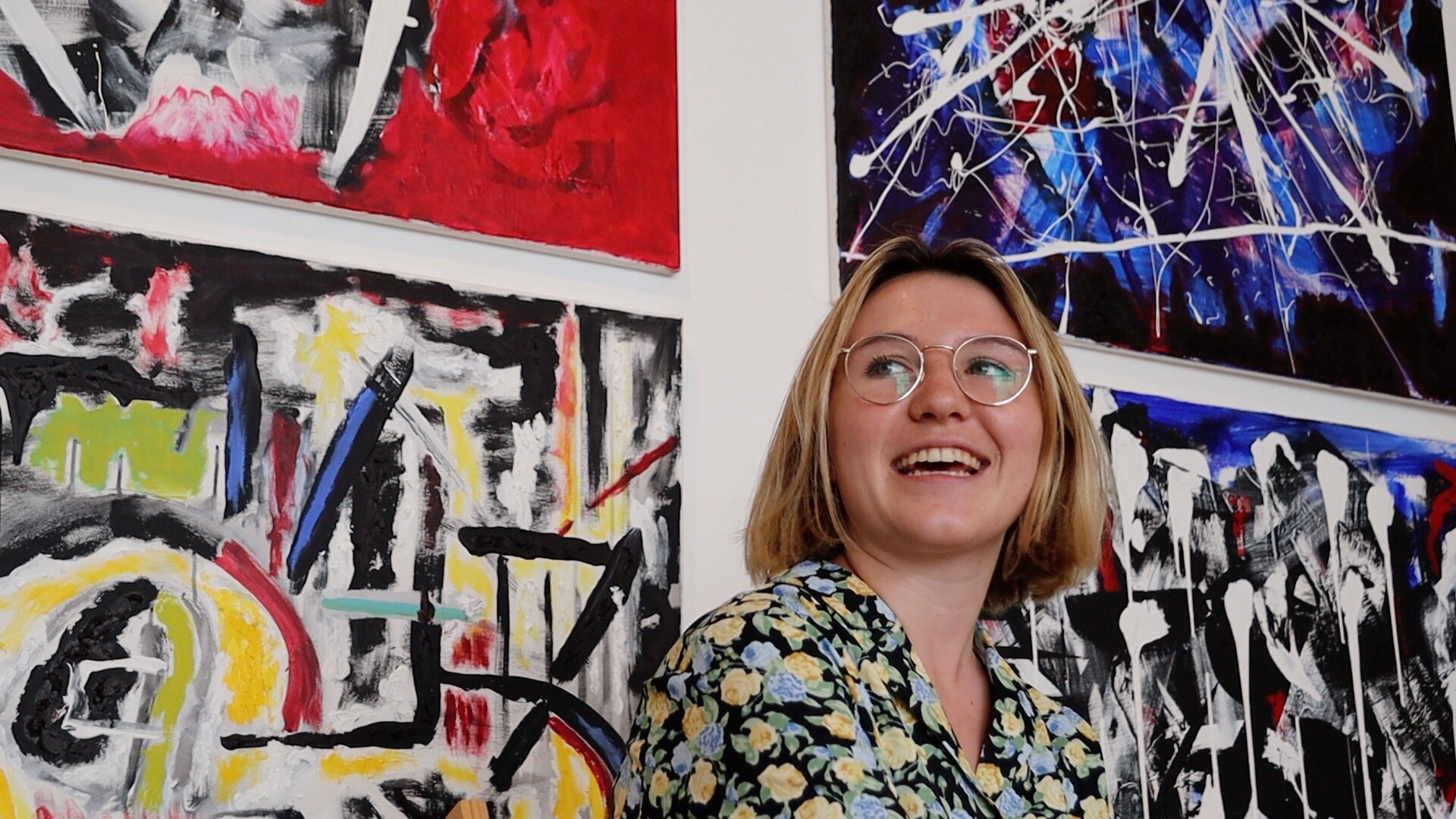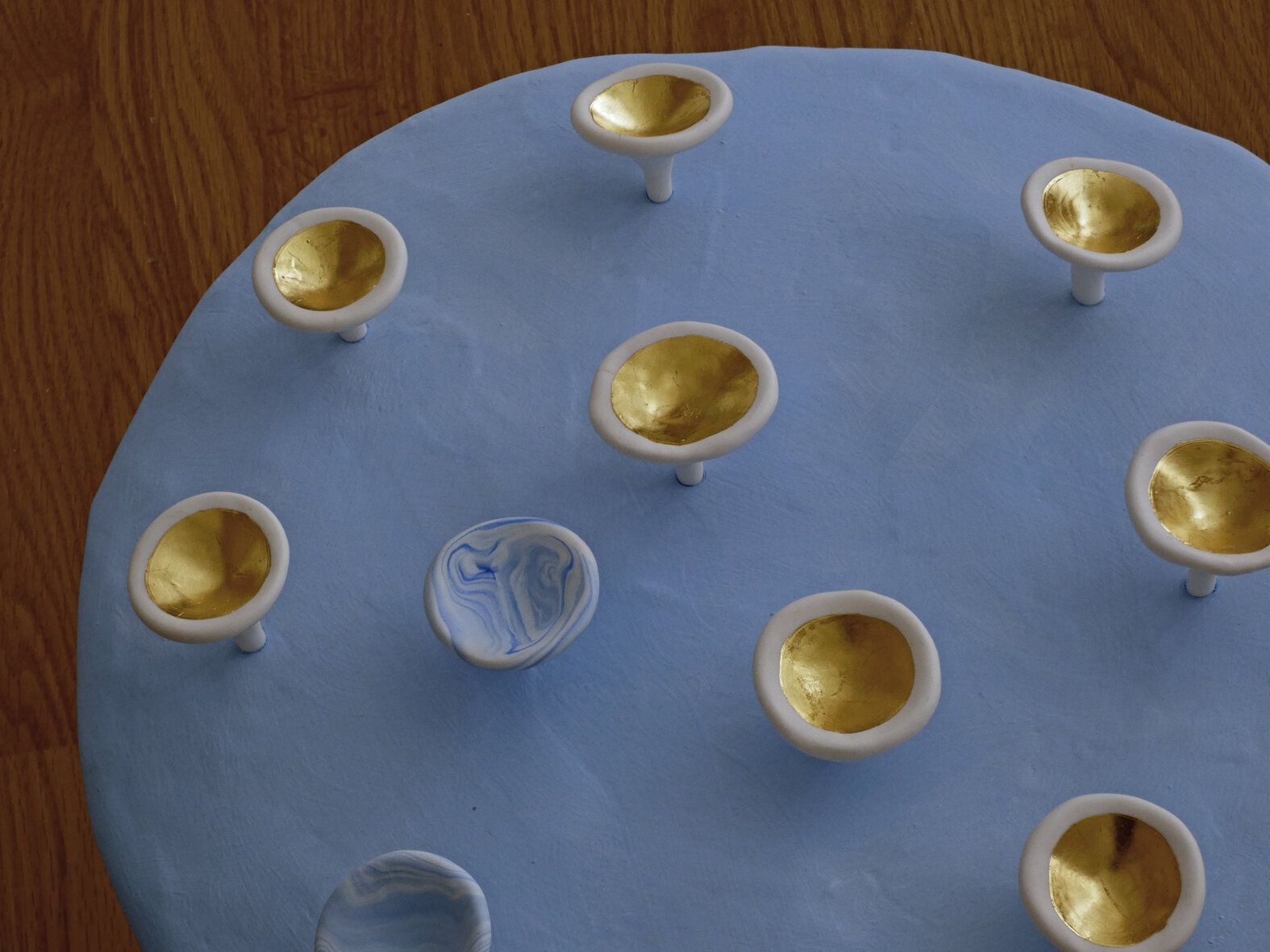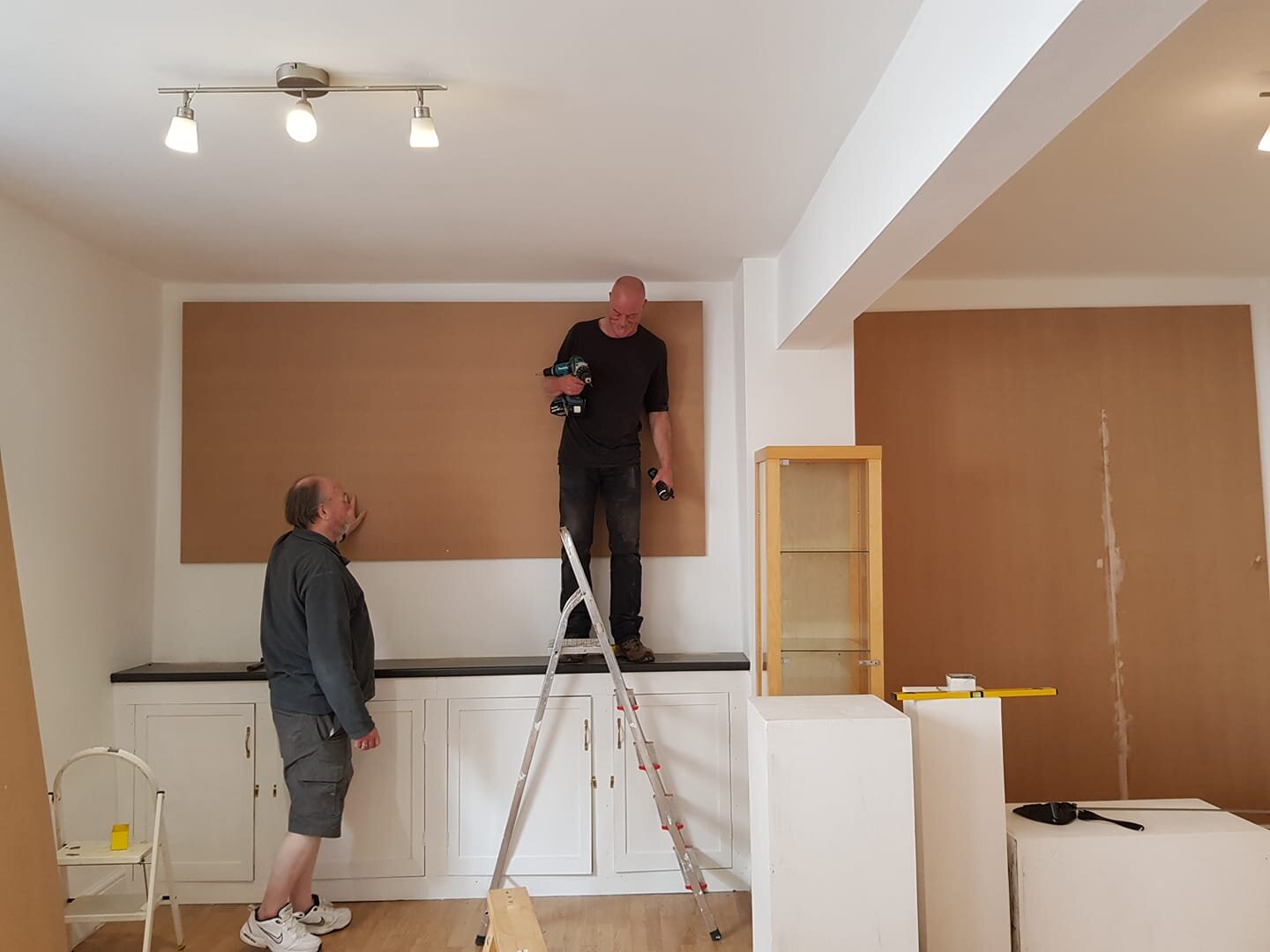G.I. The materials here certainly produce very different results. They both suggest that the motif you use as a starting point for a work is merely a springboard. You mentioned the romantic in art, so are investigations into feeling and response foremost in your search?
J.W. Yes, I would say that investigations into feelings and response are definitely foremost in my search. The motifs are something that I search for to help express that, so I don’t start with them, I tend to finish with them. I apply paint, often in many layers, sometimes removing it as well, until I find a resonance between a shape/motif that perhaps appears as if by accident, and a feeling that is already there. As soon as a motif takes on a life of its own, I leave it. Oil paint lends itself very well to this way of working. I have found a way of using ink, and various other water based paint on paper, by turning it over and incorporating the stains that come through into another image which slows down a process that would otherwise be a much faster way of working. This way accidents can still be a part of the process. Similarly I allow motifs to appear very slowly, so they are searched for. The paintings, I think, do relate somewhat to a tradition of landscape oil painting. I love looking at oil sketches, i.e. Constable or Corot, or Thomas Jones, but instead of making fast oil sketches, I make slow ones, which involve numerous places and a lot of time. Maybe the works on paper are more primitive in a way, and relate to a much older way of mark making and recording surrounding or events. I like to look at drawings by Dubuffet, or Eileen Ager…..Artists who work from their sub-conscious.
S.J.Being a painter during the Covid pandemic hasn't been that different to ‘normal’ times because as an artist and gardener I am very used to isolation.
What has been difficult is not seeing friends, and in particular other artist friends.
I belong to a group of artists called Six in Conversation (sic) and we meet once a month to discuss art, life and food! We support each other in our practices and organise group exhibitions and laugh a lot - which has made being an artist a lot less lonely.
Having an exhibition to work towards gave a focus to days which could have lacked motivation. Like a lot of people, my world shrank to my garden and the daily walks around the village. I really began to take notice of shadows and reflections and got excited about puddles in the road! Once you start noticing these things it becomes impossible to ignore them. The shifting shapes and wind blown reflections are mesmerising. Alliums, euphorbias and grasses in the garden provided the colours and structure. And so the inspiration for my work in “Under new made clouds” came into being.
G.I. Sian, your paintings achieve a sense of deep illusionistic depth of field between fore and backgrounds; yet still acknowledge the flatness of the picture surface. Addressing this fundamental dichotomy is a cornerstone of Modernism. How do you see your work relating to contemporary art practice?










































































































